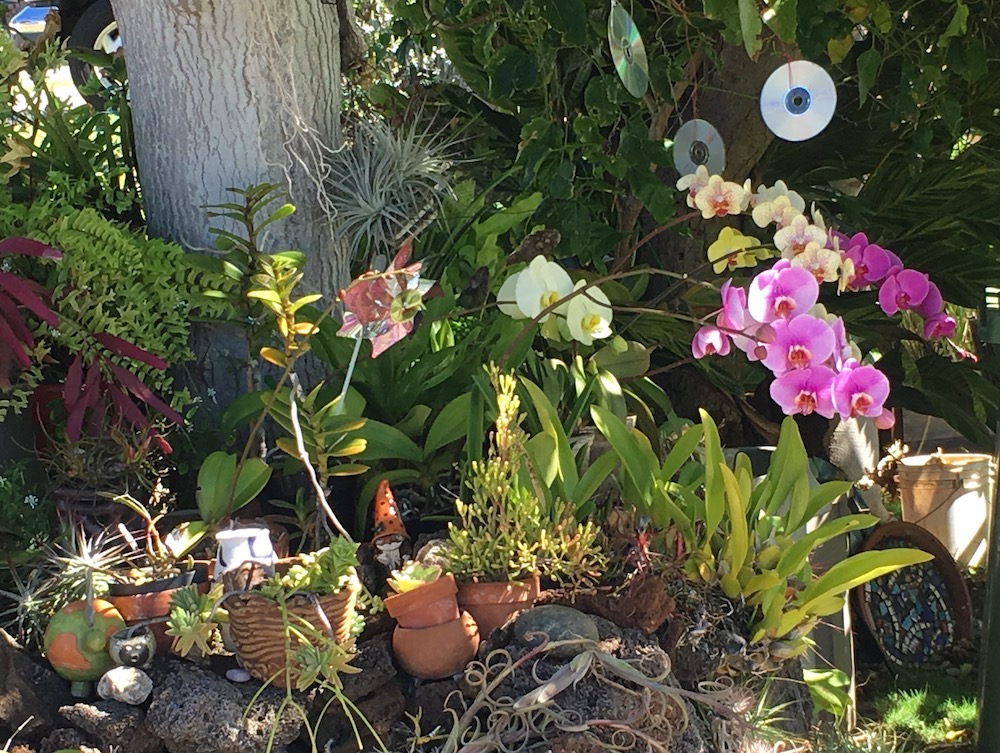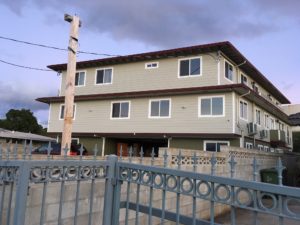
A 3 story monster with 2 entrances and multiple electrical meters in Foster Village
Wednesday was a GREAT day for us monster house opponents because the Honolulu City Council unanimously passed the 3rd reading of Bill 79, which made major changes to the LUO (land use ordinance) for Oahu. In short, house sizes for our average 5,000 square foot lots or smaller are limited to 60-70% of floor area ratio to lot size, wet bars (which monster people would convert to illegal kitchens) are limited to 1, laundry rooms are limited to 1, electric meters are limited to 1, and number of bathrooms are limited to 4 1/2. Adequate parking must be provided, and at least 25% of the lot cannot be impervious (concrete or asphalt). The bigger lots allow for more wet bars, bathrooms, etc. but size limits will still be in place, and inspections will be allowed for a year after occupancy to check that the house has not been altered.
Aunty and fellow members of HiGoodNeighbor.com testified along with others in support and thanks. A pleasant surprise was that even representatives of Hawaii’s building industry showed support for the bill. Prior to, they voiced strong opposition to any changes and instead blamed the Department of Planning and Permitting for not clamping down on (mostly foreign) builders who found ways to build huge – legally. These foreign builders would then alter, subdivide, rent illegally, sell and repeat, all the while not get caught or stopped. This was a case of a few bad apples spoiling the face of our island neighborhoods for profit, so hopefully those bad apples go away.
But not soon enough
It had been a mission for Aunty for about 2 years ever since seeing and reading the news about monster houses coming up in Palolo Valley and Kaimuki. Unscrupulous builders were buying up old houses, knocking them down along with all the wonderful trees, and putting up structures with the most bedrooms, bathrooms and kitchens that they could fit without any regard to their neighbors, parking, or communities. One of the most heartbreaking stories was that of Missy Mai’i, who bought a little house with a great view of the city and ocean a few years ago. A monster builder put up a multi-level house on a slope next to her and totally took away her view.
Just recently, the same thing is beginning to happen to Aunty. The property just behind Aunty was purchased by a contractor a few years ago and he received a permit soon after. He did nothing for years but rented out the dilapidated 2 story house and cottage on the lot to several renters who came and went. It was filled with weeds and random plantings and looked like a dump but Aunty could still look out her back windows and see sunrises over Maunalua Bay and Koko Head, about a half inch of ocean, and the charming rooftops of Kaimuki houses.
The bad apple seed is sprouting

This shows half of the total foundation, which continues after the 8′ concrete divide in mirror image to the street beyond
In October, Joey, a young local contractor working under the owner builder contractor began to demo the old houses and everything else on the lot. The owner builder is foreign but at least he hired Joey. A huge old mango tree, banana trees, moringa, and avocado trees were ripped out, laying bare the entire lot. Slowly more work was done, hollow tile walls erected around the property, trenches dug out, rebars laid in, and truckloads of gravel dumped, filled, and leveled into semi-erected walls.
It was at this point, neighbors began to gather and would speak to the owner who occasionally came to view the progress. Each person had a different story of what they heard would happen from him. We organized a meeting with the owner so we could all get the same picture directly from his mouth. He brought his wife who acted like she couldn’t speak English and his pretty young daughter. He seemed like a nice person and would agree to remedy our concerns about water overflow if it rained heavily, making sure the contractor waters the site twice a day to cut down on dirt flying into our houses, and maintaining green spaces. His wife suddenly could speak English and assured us that she and her family would start a garden. They would live in the back house and their other daughter would come back from the mainland to live in the front house.
Construction continued, hollow tile foundation walls got taller, more fill came in and plumbing pipes were laid in and buried, a massive wall of concrete blocks grew right down the middle of the property. The site was never watered down, water overflow concerns were not passed on to the grading contractor. At this point, Aunty viewed a set of building plans from DPP (Department of Planning and Permitting) which is available to the public. The 2 houses were only divided by a common wall and massive – each one were mirror images of each other and 2 stories high. Two full kitchens, 2 wet bars, 9 bathrooms, 2 dens, 12 bedrooms. 7,386 square feet under roof for a 7,500 square foot lot. 120 linear feet of house with 12 windows on the 2nd floor looming over Aunty. Yuck, yuck, yuck.
For now, Aunty still has a view and is taking as many photos at different times of the day and plans to paint the view as it is now. Soon, it will be lost and blocked out by the 2 houses. It will be like having a 30′ high fence, 5 feet away as Aunty’s new back view. Hopefully this will be the last of the monsters, and that Aunty can get used to her soon to be altered reality.
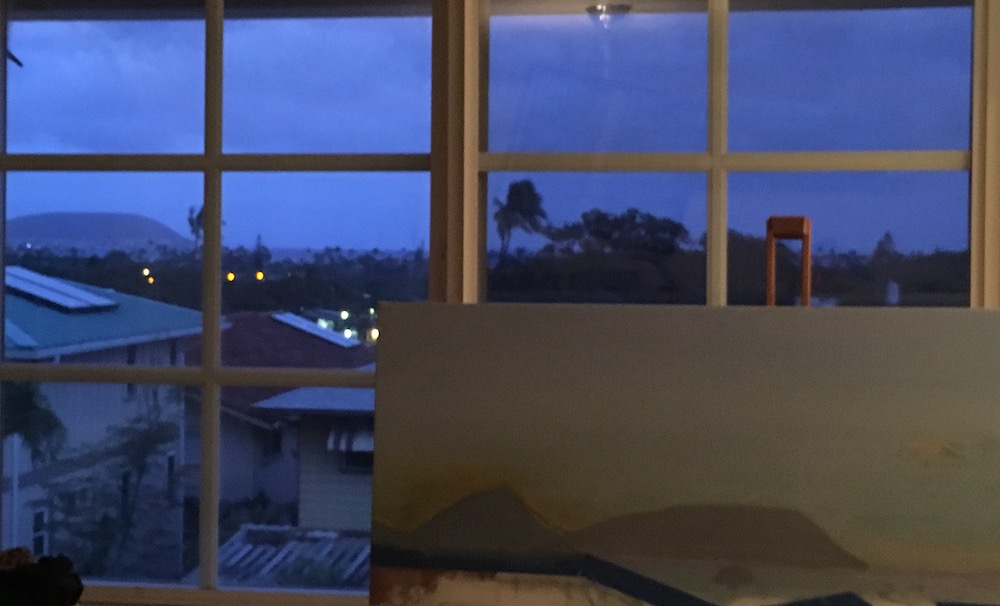

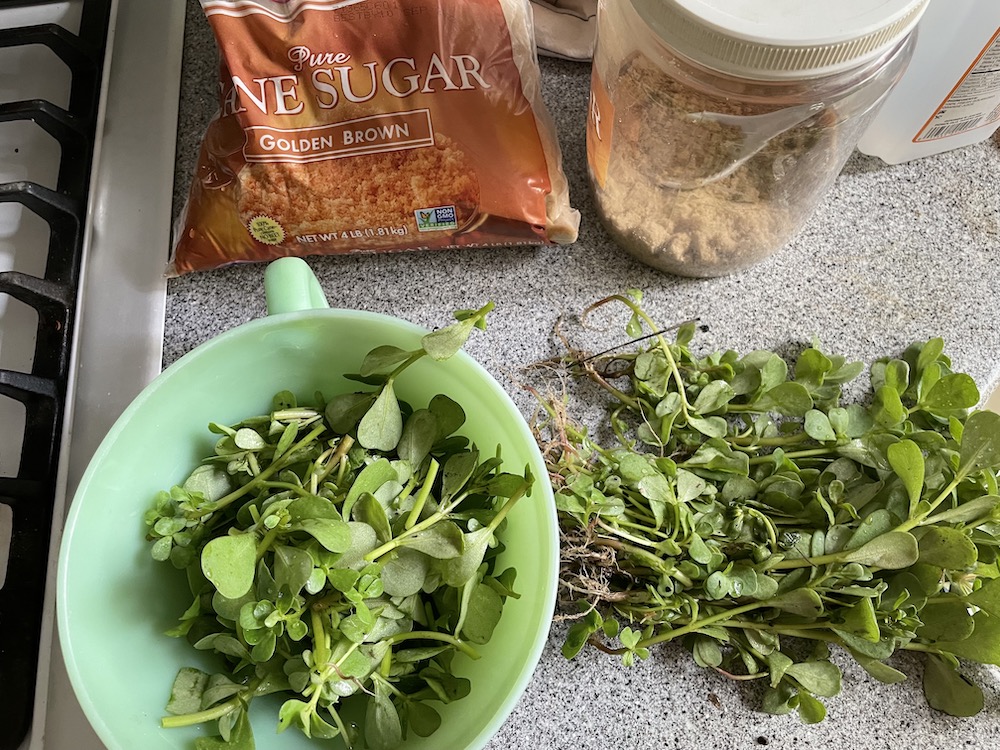
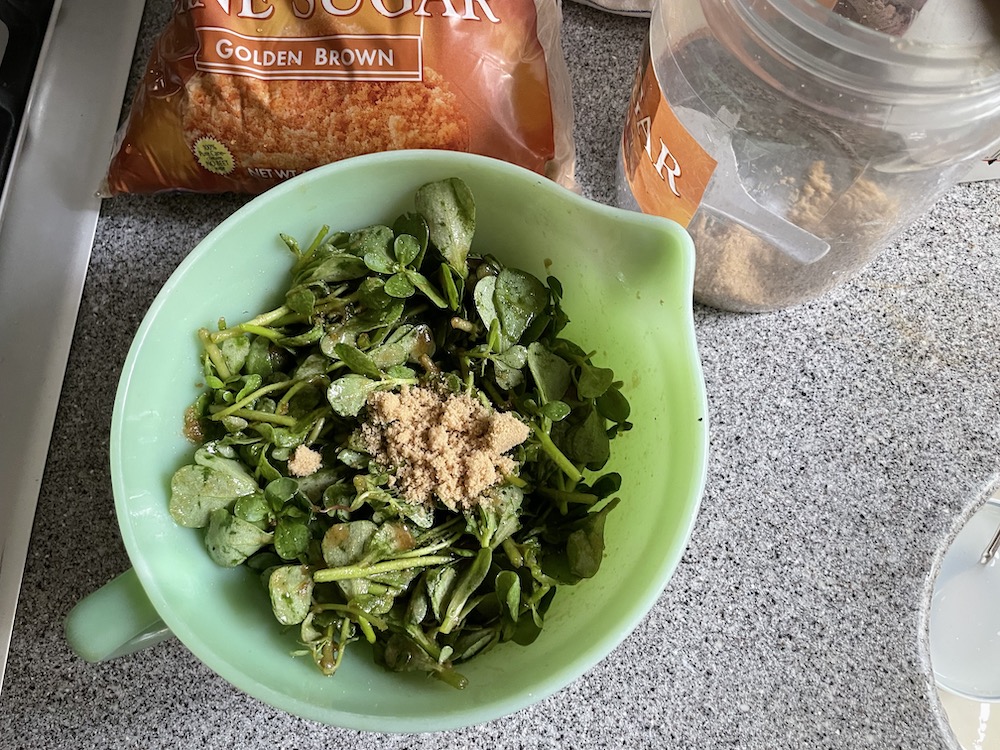
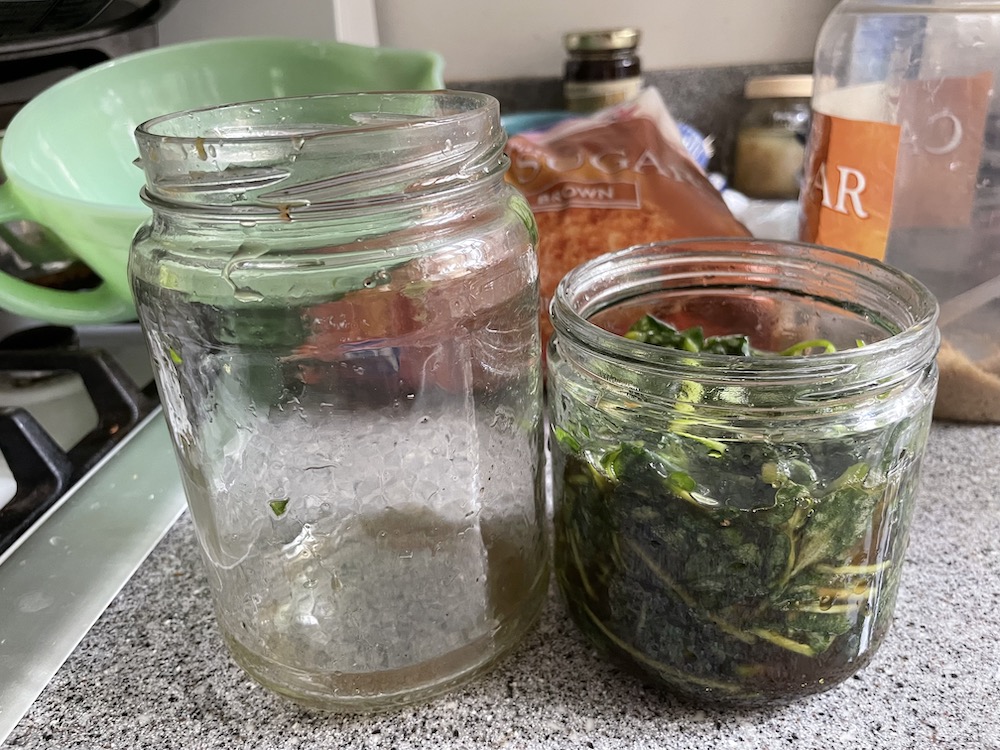

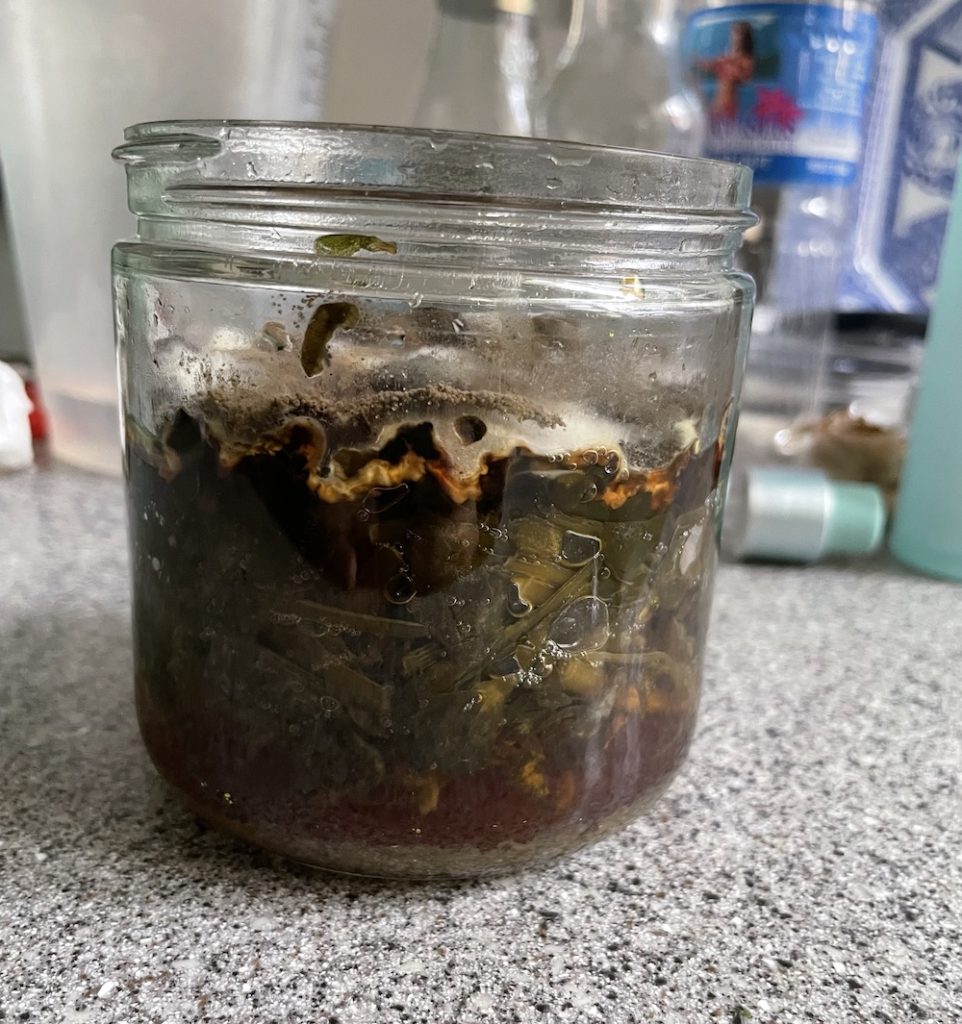
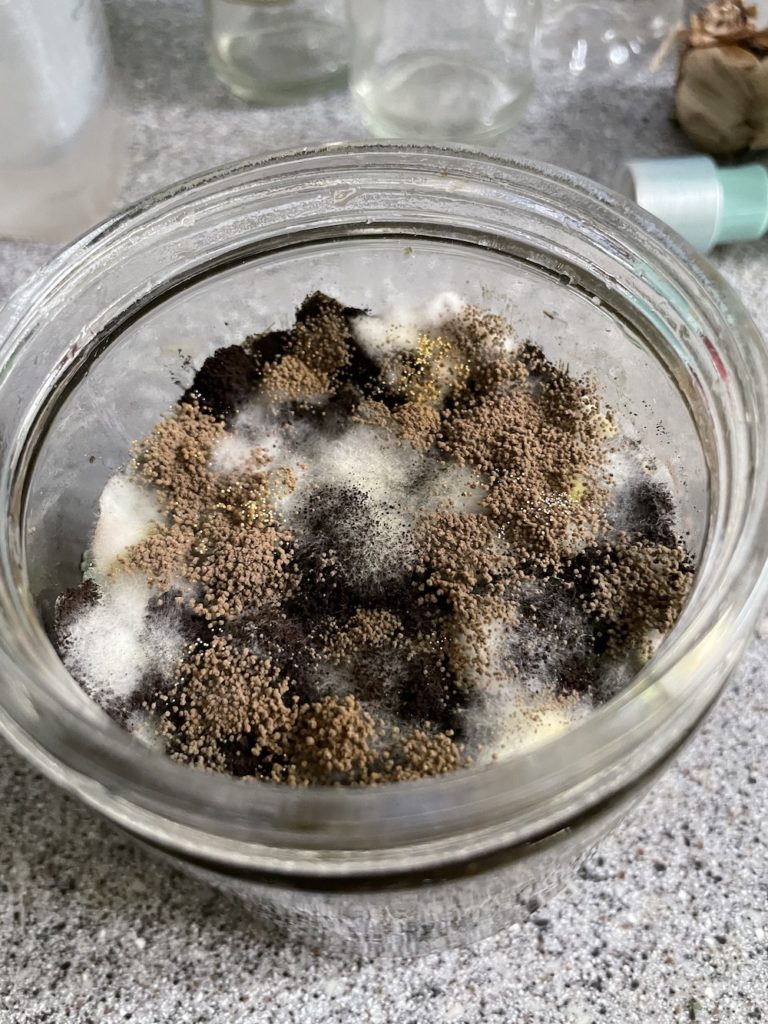
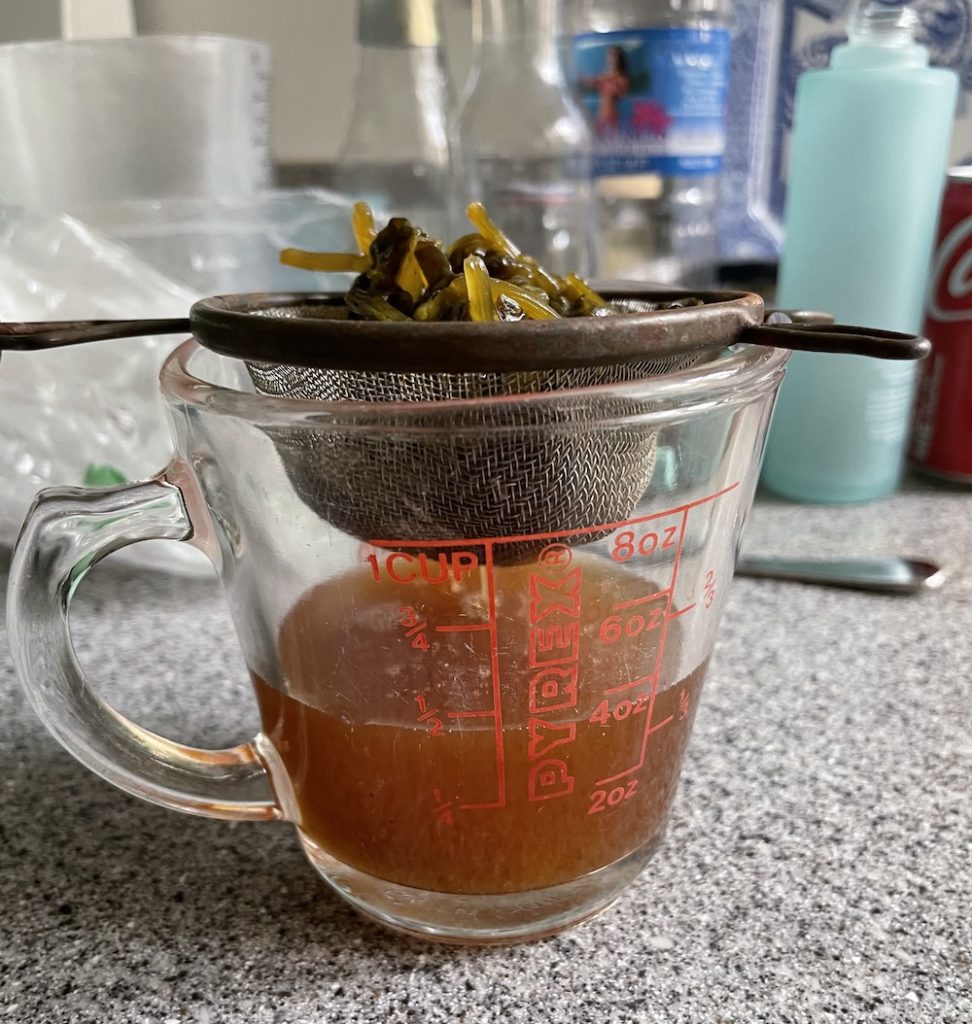
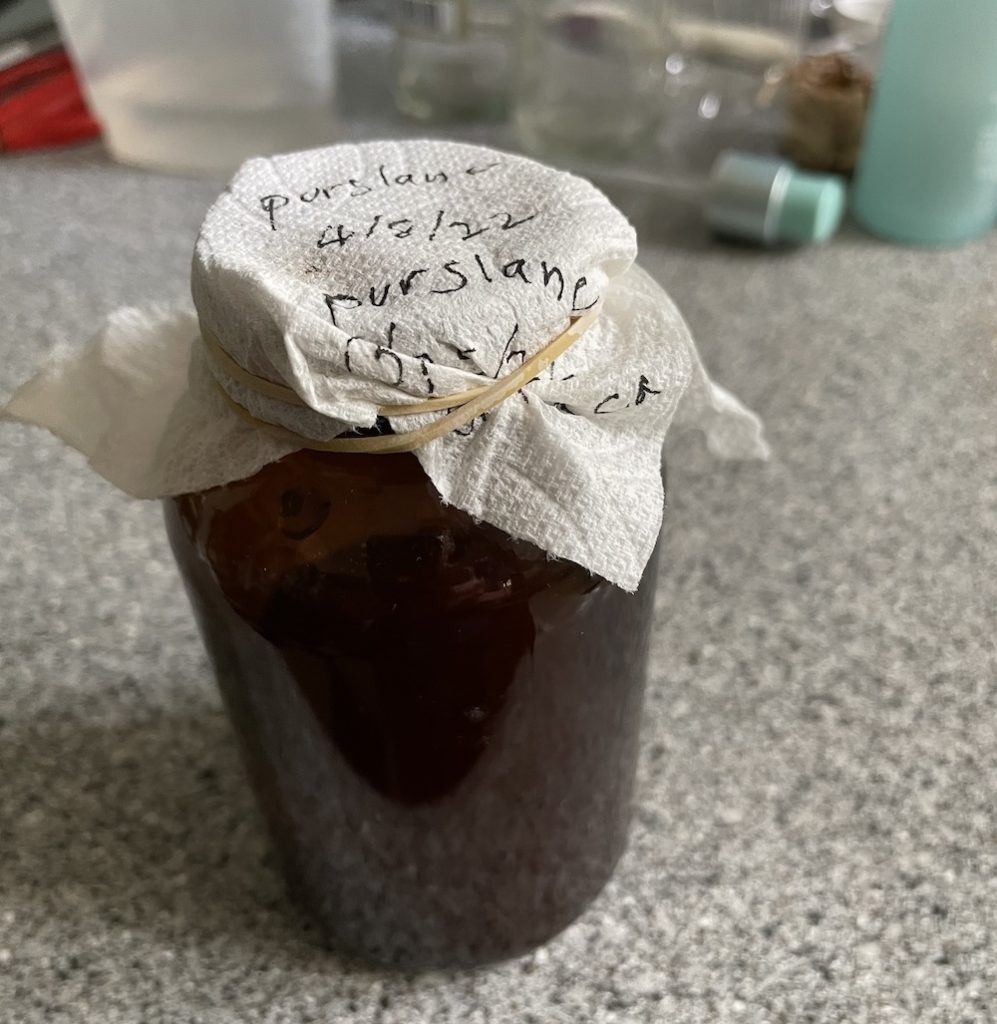



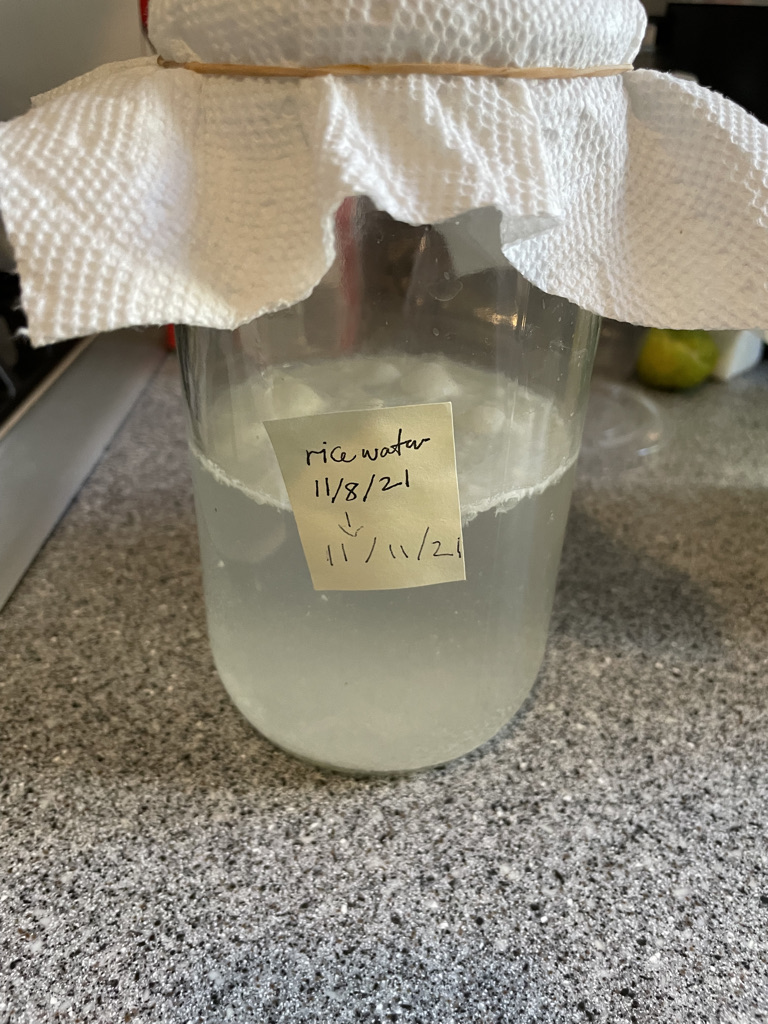
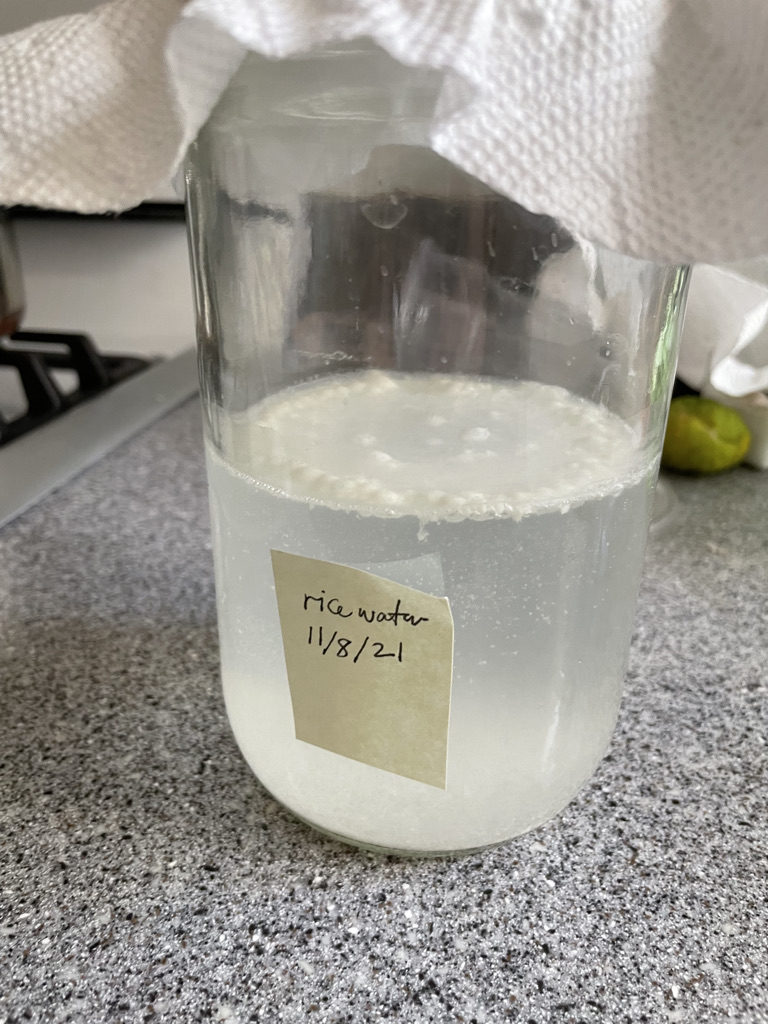

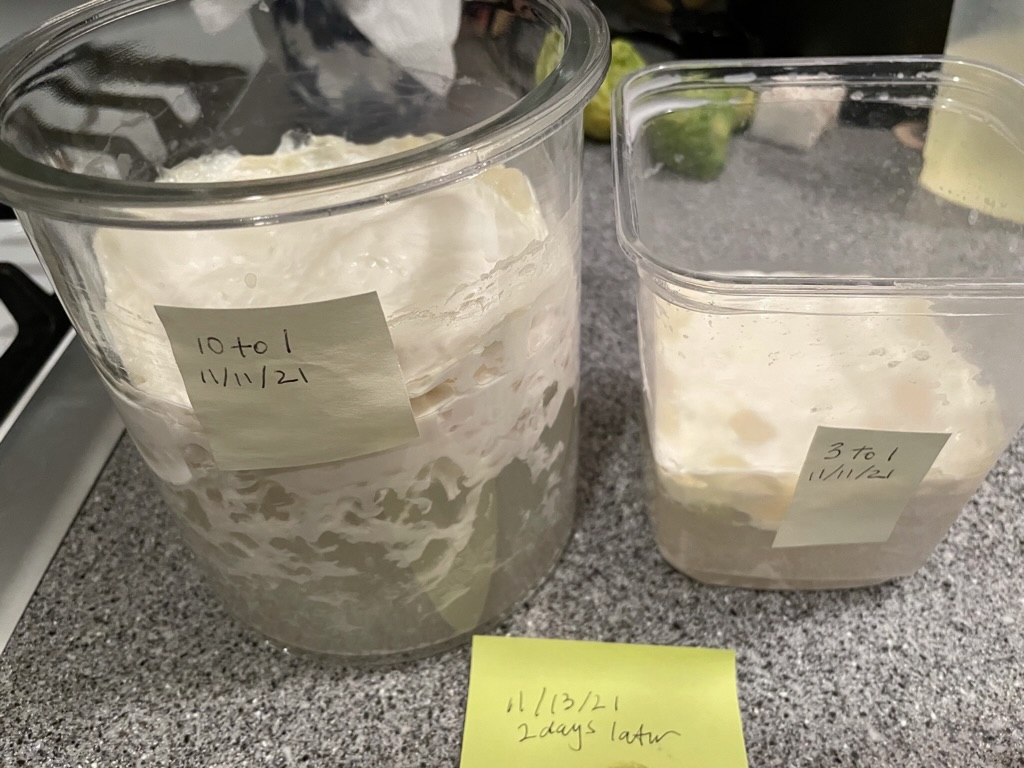

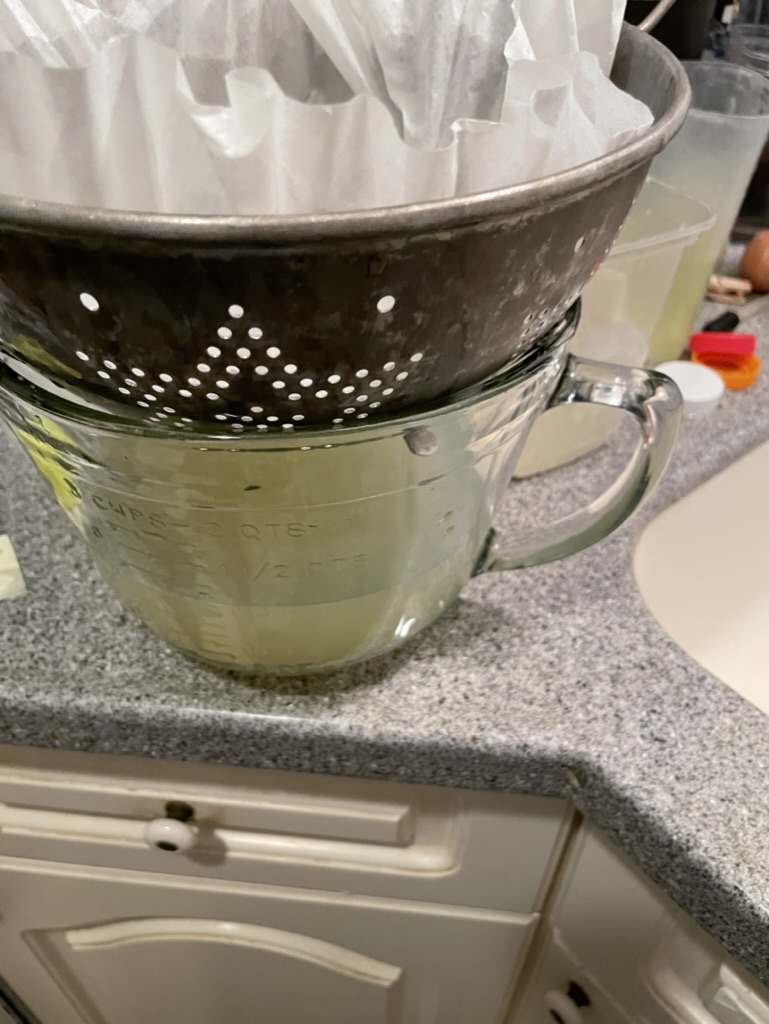



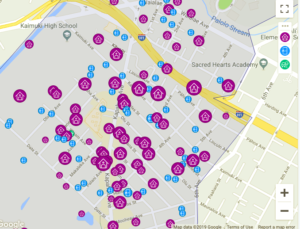



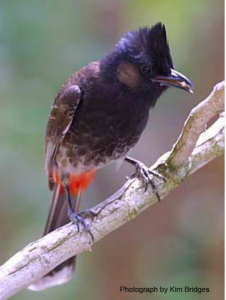 One of Aunty’s favorite pastimes is gardening. Every plant in the yard has a little story – where it was bought, who gave it, etc. Lizards run around, bees buzz, and birds perch and poop. One unwelcome bird pooper is the Bulbul – an invasive species that was released in Hawaii, probably by a bird lover who let their illegal pets into the Islands. They are black with red butts. These birds feed on fruits, vegetables, and flower buds – Aunty’s orchid flower buds in particular.
One of Aunty’s favorite pastimes is gardening. Every plant in the yard has a little story – where it was bought, who gave it, etc. Lizards run around, bees buzz, and birds perch and poop. One unwelcome bird pooper is the Bulbul – an invasive species that was released in Hawaii, probably by a bird lover who let their illegal pets into the Islands. They are black with red butts. These birds feed on fruits, vegetables, and flower buds – Aunty’s orchid flower buds in particular. This year, Aunty’s orchid plants became profuse with orchid spikes and buds. The Bulbuls seemed to be leaving them alone! Each day would bring more buds and these slowly grew larger until a few of them started to bloom. Happy happy joy joy!!! until petals seemed to fall off, so Aunty gave it some organic fertilizer to boost the plants. However, it wasn’t the health of the plant causing the petals to break off. Buds were also being nipped off. The dang Bulbuls had found Aunty’s trove of orchids and began to feast.
This year, Aunty’s orchid plants became profuse with orchid spikes and buds. The Bulbuls seemed to be leaving them alone! Each day would bring more buds and these slowly grew larger until a few of them started to bloom. Happy happy joy joy!!! until petals seemed to fall off, so Aunty gave it some organic fertilizer to boost the plants. However, it wasn’t the health of the plant causing the petals to break off. Buds were also being nipped off. The dang Bulbuls had found Aunty’s trove of orchids and began to feast.